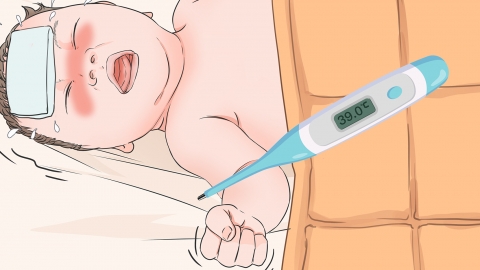What is the first aid for a child having a fever-induced seizure?
Febrile convulsion, also known as fever, generally requires the following first-aid steps when a child experiences convulsions due to fever: maintaining a lateral position, loosening clothing, clearing the mouth and nose, avoiding forceful intervention, and seeking medical help promptly. Following these procedures properly can reduce risks. Detailed explanation is as follows:

1. Maintain a lateral position: Immediately place the convulsing child flat on a secure surface such as the floor or bed and quickly turn them onto their side with the head tilted to one side. This prevents vomit or secretions from blocking the airway and ensures unobstructed breathing.
2. Loosen clothing: Undo the child's collar, cuffs, and other tight clothing, and loosen the belt to reduce physical restraint, aid heat dissipation, and prevent pressure on the neck that might affect breathing.
3. Clear the mouth and nose: If there are secretions or vomit in the child's mouth or nose, gently wipe and remove them with clean gauze or a cloth to keep the airway clean. Do not insert any objects into the mouth to dig or scrape.
4. Avoid forceful intervention: Do not forcibly press the child's limbs, pry open the mouth, or give anything orally. These actions may cause physical injury, loose teeth, or choking. Simply stay close to prevent falls or collisions.
5. Seek medical help promptly: After the convulsion stops, take the child to the hospital immediately. If the seizure lasts more than five minutes without subsiding, call emergency services while continuing to monitor the child and wait for professional assistance.
Febrile convulsions are often caused by high fever-induced seizures. It is important to remain calm during first aid and strictly follow the above steps. Regularly monitor the child's body temperature, promptly reduce fever when it occurs, and avoid sudden temperature increases that may trigger convulsions. When seeking medical care, inform the doctor of the duration and characteristics of the convulsion to assist in accurate diagnosis and treatment.




